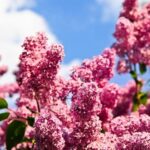Native plants can bring a unique and captivating charm to any garden, while also providing numerous benefits for the environment. In this article, we will explore the importance of incorporating native plants in garden designs and learn how they can enhance the overall beauty and sustainability of your outdoor space.
Gone are the days when exotic and foreign plants were considered the pinnacle of garden design. Today, there is a growing recognition of the immense value that native plants bring to our gardens. Native plant garden design not only supports local ecosystems but also helps conserve water, reduce maintenance requirements, and attract a variety of wildlife.
When we talk about native plants, we are referring to those species that have naturally evolved in a specific geographic region over hundreds or even thousands of years. These plants have developed various adaptations to withstand local weather conditions, soil types, and pests, making them exceptionally well-suited for your particular location.
Choosing the right native plant species for your garden is crucial for ensuring their overall success. Factors such as geographic location, soil conditions, and sunlight exposure need to be considered carefully. By selecting native plants that are best suited for your area, you can create a thriving ecosystem that supports pollinators like bees and butterflies as well as local bird populations.
In the following sections, we will delve deeper into different aspects of layout native plant garden design. We will discuss how understanding native plants is essential for their successful integration into your garden layout. We will also provide valuable tips on designing layouts that showcase naturalistic beauty or formal elegance while promoting sustainable practices. Additionally, we will explore how incorporating seasonal interest through varying blooming periods and fall colors can elevate your garden’s visual appeal throughout the year.
So grab your gardening gloves and let’s embark on an exciting journey to discover the wonders of incorporating native plants into our garden designs.
Understanding Native Plants
Native plants are a key component of any successful garden design, and understanding their characteristics and advantages is crucial in creating a beautiful and sustainable native plant garden layout. Native plants are those that have naturally adapted to the specific environmental conditions of a particular region over many years. These plants are well-suited to the local climate, soil type, and wildlife, making them highly resilient and low-maintenance.
One of the main advantages of using native plants in garden layouts is their ability to conserve water. Native plants have developed deep root systems that enable them to access water from lower soil levels, reducing the need for regular watering. Additionally, these plants have evolved to tolerate periods of drought and require less maintenance once established. By incorporating native plants into your garden design, you can create a beautiful landscape while also conserving water resources.
Another advantage of native plants is their ability to support local wildlife. Native plant gardens provide food and shelter for a variety of animals, including birds, butterflies, and bees. These gardens offer an important habitat for pollinators and other beneficial insects that play a vital role in maintaining ecological balance. By using native plants in your garden layout, you can contribute to the preservation of local biodiversity and create a thriving ecosystem within your own backyard.
| Advantages of Native Plants in Garden Layouts | Characteristics |
|---|---|
| Conserves water through deep root systems | Naturally adapted to local climate, soil type, and wildlife |
| Provides food and shelter for local wildlife | Tolerant to drought conditions once established |
| Contributes to the preservation of biodiversity | Low-maintenance and resilient |
Selecting the Right Native Plants
When designing a native plant garden layout, one of the most crucial steps is selecting the right native plants for your specific location. Native plants are those that naturally occur in a particular region and have adapted to its climate, soil conditions, and ecosystem. By incorporating native plants into your garden design, you can create a harmonious and sustainable landscape that supports local wildlife and reduces the need for excessive maintenance.
To choose the appropriate native plant species for your garden, it is essential to consider the geographic location of your area. Different regions have distinct climatic conditions, such as temperature ranges and rainfall patterns. Research what types of native plants thrive in your particular climate zone to ensure their success in your garden.
Another factor to consider when selecting native plants is the soil conditions in your area. Some native plants prefer well-drained soil, while others thrive in moist or sandy soil. Conduct a soil test to determine its pH level and nutrient content. This information will help you choose native plant species that are best suited to your specific soil conditions.
Furthermore, sunlight exposure plays a crucial role in determining which types of native plants will flourish in your garden. Some native plant species can tolerate full sun exposure, while others require partial or full shade. Observe how sunlight patterns change throughout the day in different parts of your garden to identify areas with varying levels of sunlight exposure.
Designing the Layout
When it comes to designing a native plant garden layout, there are various approaches that can be taken to create a visually appealing and harmonious space. Whether you prefer a naturalistic, formal, or mixed style, each approach offers its own unique advantages and aesthetic appeal.
One popular approach is the naturalistic style, which aims to mimic the look and feel of a natural habitat. This style often incorporates curves, meandering paths, and organic shapes to create a more relaxed and informal atmosphere. In a naturalistic native plant garden layout, plants are arranged in a way that mimics their growth patterns in nature. This allows for a more organic flow and encourages wildlife to thrive in the space.
On the other hand, some gardeners may prefer a more formal design for their native plant garden layout. In this style, geometric shapes such as straight lines and symmetry take center stage. A formal layout can create a sense of orderliness and structure in the garden. It is achieved by carefully selecting plants with clean lines and defined shapes that can be neatly arranged into geometric groupings.
For those who cannot decide between naturalistic and formal styles or simply want to enjoy the best of both worlds, a mixed approach may be the perfect solution. A mixed style native plant garden layout combines elements of both naturalistic and formal designs to create an eclectic look. This style allows for more creativity and flexibility when it comes to arranging plants in the garden.
Creating a Wildlife-Friendly Habitat
Native plant gardens not only provide aesthetic beauty but also serve as important habitats for local wildlife. By incorporating native plants into garden designs, you can create a welcoming environment for birds, butterflies, bees, and other beneficial insects. These gardens act as ecosystems that support biodiversity and contribute to the overall health of the environment.
One of the main advantages of native plant gardens is their ability to attract a wide variety of bird species. Native plants produce berries, seeds, and nectar that serve as an important food source for birds throughout the year. By including a diverse selection of native plants with different blooming periods and fruiting seasons, you can ensure that there is a continuous supply of food for these feathered friends.
Consider planting species such as serviceberry (Amelanchier spp. ), purple coneflower (Echinacea purpurea), or cardinal flower (Lobelia cardinalis) to attract different types of birds.
Butterflies are another beautiful addition to any garden, and native plants are essential for attracting them. Native plants provide butterflies with host plants on which they can lay their eggs, as well as nectar-rich flowers that serve as sources of food for adult butterflies. To attract butterflies to your garden, include native plants like milkweed (Asclepias spp.) for monarch butterflies or Joe-Pye weed (Eutrochium spp.) for swallowtails.
Bees play a crucial role in pollination, and by incorporating native plants into your garden layout, you can provide them with an abundant source of nectar and pollen. Native flowering plants are often specially adapted to attract pollinators through bright colors or unique shapes that make it easier for bees to access the nectar. Examples of bee-friendly native plants include bee balm (Monarda spp.), black-eyed Susan (Rudbeckia hirta), and goldenrod (Solidago spp).
To create a wildlife-friendly habitat, it is important to provide other elements in your garden besides plants. Consider adding features like birdbaths, birdhouses, or butterfly puddling areas to attract and provide resources for wildlife. Additionally, minimize the use of pesticides and herbicides as they can harm beneficial insects like bees and butterflies.
By creating a wildlife-friendly habitat in your native plant garden, you can contribute to the conservation of local wildlife populations while enjoying the beauty and buzz of nature right in your own backyard.
Incorporating Seasonal Interest
Creating a Seasonal Planting Plan
When designing a native plant garden layout, it’s important to consider the seasons and how different plants will bloom and provide visual interest throughout the year. By incorporating plants with varying blooming periods and fall colors, you can ensure that your garden has year-round appeal. One strategy for achieving this is by creating a seasonal planting plan.
Start by researching native plants that thrive in your specific geographic location and make note of their flowering times and foliage changes. This will help you identify which plants can provide color and interest during each season. Consider selecting plants that bloom in different seasons, such as early spring flowers, summer perennials, and fall foliage.
To create a visually appealing garden year-round, arrange the plants according to their blooming periods. Place early spring bloomers near the entrance of your garden or along pathways where they will be most visible. Transition into summer with perennials or shrubs that offer long-lasting blooms. Finally, select trees or shrubs with vibrant fall colors to create visual impact as the gardening season comes to an end.
Adding Colorful Fall Foliage
While flower blooms may be coveted during the spring and summer months, fall foliage can be just as captivating. Incorporating native plants known for their stunning autumnal colors can add vibrancy and visual interest to your garden layout.
Research which native trees and shrubs in your region are renowned for their fall foliage displays. Consider including species such as maples, oaks, dogwoods, sumacs, or witch hazels for their vibrant reds, oranges, yellows, and purples. These trees not only provide beautiful color but also attract wildlife with their fruit or seeds.
Additionally, think beyond deciduous trees when planning for autumn color. Many native herbaceous perennials also offer stunning leaf hues during the fall season. Include plants like asters, goldenrods, or native grasses with attractive foliage that changes color in the autumn. These plants can be incorporated into borders or mixed in with other perennials to add visual interest.
Integrating Evergreen Plants
While it’s important to consider seasonal interest in your garden layout, don’t forget about incorporating evergreen plants. Evergreens offer year-round structure and foliage color, providing a backdrop for the changing colors of deciduous plants during the fall and winter seasons.
When selecting evergreens, choose native species that are well-suited for your location’s climate and soil conditions. Some common options include pines, spruces, firs, hollies, and junipers. These plants not only provide greenery during the colder months but also serve as shelter and food sources for wildlife.
By incorporating evergreen plants strategically throughout your garden design, you can maintain an appealing landscape even when other plants are dormant or have shed their leaves. Consider placing them at key focal points or along borders to create a framework that will enhance the overall aesthetics of your native plant garden throughout the entire year.
Maintenance and Care
Native plant gardens require regular maintenance and care to ensure their health and longevity. By following proper care techniques, you can help your native plants thrive and create a sustainable garden that supports local biodiversity. This section will outline some essential care practices for native plant gardens, including watering, pruning, and managing pests and diseases.
Watering
One of the key aspects of maintaining a native plant garden is understanding the watering needs of different species. While native plants are generally more adapted to the local climate conditions, it is crucial to provide adequate water during establishment periods or dry spells. Deep watering less frequently is often better than frequent shallow watering as it encourages deeper root growth.
To determine if your plants need watering, check the moisture level of the soil using your finger or a moisture meter. If the top inch or so of soil feels dry, it’s time to water. When giving water, aim to provide slow and steady irrigation directly at the base of each plant to ensure water reaches the roots effectively. Consider using mulch around plants to help retain moisture in the soil.
Pruning
Pruning plays an important role in maintaining the health and appearance of native plant gardens. Regular pruning helps remove dead or damaged foliage, promotes air circulation, prevents overcrowding, and encourages strong growth patterns.
When pruning native plants, it’s essential to have an understanding of each species’ specific requirements. Some plants may require annual trimming in early spring before new growth appears, while others may benefit from light deadheading throughout the growing season to promote continuous blooming.
Before pruning any plant in your native garden, familiarize yourself with its growth habit and flowering period. This knowledge will guide you in determining when and how to prune correctly without compromising its natural shape or flowering potential.
Managing Pests and Diseases
Native plant gardens are generally more resistant to pests and diseases compared to non-native species. However, that does not mean they are completely immune. It’s important to monitor your garden regularly for signs of infestation or disease and take appropriate action if necessary.
Integrated pest management (IPM) practices can be applied in native plant gardens to minimize the use of chemical pesticides. IPM involves monitoring and identifying pests, using physical barriers like netting or fences, encouraging beneficial insects that prey on pests, and practicing cultural methods such as companion planting and proper spacing to deter pests.
If a pest or disease problem arises, research organic and environmentally-friendly solutions such as insecticidal soaps or neem oil. Always follow the instructions carefully when applying any treatment to avoid harming beneficial insects or disrupting the ecosystem balance.
By following these maintenance and care techniques, your native plant garden can thrive while reducing the need for excessive watering, pruning, or chemical controls. This sustainable approach not only benefits your garden but also promotes a healthier environment by providing food sources and habitat for local wildlife.
Sustainable Practices
Incorporating sustainable practices is essential when designing a native plant garden. By prioritizing sustainability, you can create a garden that not only benefits the environment but also requires less maintenance in the long run. One important sustainable practice to consider is the use of organic fertilizers. Unlike synthetic fertilizers, organic options are derived from natural sources and promote healthy soil conditions without harming the ecosystem.
Choosing organic fertilizers ensures that your native plants receive the necessary nutrients without introducing harmful chemicals into the environment. Compost, for example, is an excellent option as it enriches soil fertility and improves moisture retention. Additionally, composting kitchen scraps and yard waste reduces waste sent to landfills and supports a circular economy.
Reducing water usage is another crucial sustainable practice when designing a native plant garden. Native plants are typically adapted to local weather conditions and require less water than non-native species once established. Utilizing techniques such as drip irrigation or grouping plants with similar water needs can help conserve water and prevent overwatering.
Promoting biodiversity is also an important aspect of sustainable gardening practices. Native plant gardens naturally support biodiversity by providing food sources and habitat for various wildlife species such as birds, butterflies, bees, and beneficial insects. Including a diverse range of native plants with different heights, colors, textures, and bloom periods will attract a wide array of wildlife to your garden.
By incorporating these sustainable practices into your native plant garden design, you can contribute positively to the environment while creating a beautiful and thriving space for both plants and wildlife. Remember that each small step towards sustainability counts, so even implementing one or two of these practices can make a significant difference in making your garden more eco-friendly.
Showcasing Real-Life Examples
Native plant gardens have gained popularity in recent years due to their numerous benefits, including environmental sustainability and support for local ecosystems. If you are considering incorporating native plants into your garden design but need some inspiration, look no further. In this section, we will showcase several inspiring and successful native plant garden designs from around the world, complete with descriptions and photos.
One impressive example is the High Line Park in New York City, which transformed an old elevated railway into a stunning public park filled with native plants. The garden features a mix of grasses, perennials, shrubs, and trees that are indigenous to the region.
The design incorporates a naturalistic style with winding pathways that meander through different sections of the park. Visitors can enjoy the beauty of colorful wildflowers in the summer months or admire the vibrant fall foliage during autumn.
Another remarkable native plant garden can be found at Kirstenbosch National Botanical Garden in Cape Town, South Africa. This garden showcases a diverse collection of indigenous plants from the Cape Floral Kingdom, one of the world’s six floral kingdoms.
It features an extensive network of walking trails that lead visitors through various landscapes such as fynbos, forested areas, and wetlands. The garden not only highlights the natural beauty of local flora but also educates visitors about the significance of conserving these unique plant species.
In Australia, Cranbourne Royal Botanic Gardens is renowned for its Australian Garden section, which focuses on showcasing Australian native plants. This award-winning garden represents different Australian landscapes ranging from arid deserts to coastal bushland. It provides visitors with an immersive experience by recreating realistic environments and utilizing plants that are adapted to local conditions. The design embraces a mixed style approach that combines elements of both formal and naturalistic layouts.
These examples demonstrate how native plant gardens can be aesthetically pleasing while supporting local ecosystems and promoting biodiversity. Whether you prefer a naturalistic, formal, or mixed style design, there are endless possibilities for incorporating native plants into your garden layout. By drawing inspiration from these successful projects, you can create a beautiful and sustainable native plant garden of your own.
Conclusion
In conclusion, incorporating native plants into garden designs offers numerous benefits and is of utmost importance. Native plants have unique characteristics and advantages that make them well-suited for garden layouts. By selecting the appropriate species based on geographic location, soil conditions, and sunlight exposure, gardeners can ensure the success of their native plant gardens.
Designing the layout of a native plant garden allows for creativity and personal expression. Whether creating a naturalistic, formal, or mixed style, each design approach can result in a beautiful and harmonious outdoor space. Additionally, native plant gardens attract and support local wildlife such as birds, butterflies, and bees, creating a vibrant wildlife-friendly habitat.
To ensure year-round visual appeal in a native plant garden, it is important to incorporate plants with varying blooming periods and fall colors. This will provide constant interest and beauty throughout the seasons. Maintenance and care techniques should also be taken into consideration, including proper watering, pruning, and managing pests and diseases.
Sustainable practices are an essential aspect of native plant garden design. Using organic fertilizers reduces negative environmental impact, while reducing water usage helps conserve this valuable resource. Promoting biodiversity by incorporating a variety of native plants further supports sustainable practices.
By showcasing inspiring real-life examples from around the world, readers can gain inspiration for their own native plant garden designs. From gardens with intricate layouts to those that showcase simple elegance, these examples demonstrate the incredible potential of using native plants in garden designs.
Frequently Asked Questions
How Do I Organize My Native Garden?
Organizing a native garden involves careful planning and consideration of the natural characteristics of the plants you choose. Start by researching native plants that are suitable for your region, as they are adapted to the local climate and require less maintenance. Consider the height, width, and growth habits of each plant to ensure proper spacing.
Group plants with similar water and sun requirements together, creating functional zones within your garden. Additionally, incorporating pathways or stepping stones will provide access and add structure to the space. Finally, regularly maintain the garden by removing weeds, pruning overgrown plants, and replenishing mulch as needed.
How Do I Make a Garden Layout Plan?
Making a garden layout plan is essential for creating a cohesive and harmonious outdoor space. Begin by measuring your garden area and marking any existing structures or features that cannot be moved. Consider the purpose of your garden, whether it’s for entertaining, growing food, or simply enjoying nature.
Sketch out distinct areas for various activities or plant types based on their needs – for instance, sun-loving plants should be placed in areas that receive ample sunlight throughout the day. Don’t forget to leave adequate pathways to navigate through the garden comfortably. Once you have a basic layout in mind, start experimenting with different arrangements until you find one that suits your aesthetic preferences and practical needs.
How Do I Arrange My Plants in Front of My House?
Arranging plants in front of your house can greatly enhance its curb appeal and create an inviting entrance. Begin by considering the architectural style of your home and its surroundings – aim to complement these features rather than overpower them with excessive foliage or distracting colors. Place taller shrubs or small trees towards the corners of your house to frame it nicely while providing some privacy if desired. Alongside walkways or entry points, install low-growing plants such as groundcovers or flowering perennials to soften edges and create a welcoming atmosphere.
Be mindful of maintaining proper proportions so that all vegetation remains in scale with the size of your home; overcrowding can make a house appear smaller or cramped. Additionally, select plants that have interesting textures, colors, or fragrances to add visual interest and appeal to the front of your house. Regular maintenance and periodic pruning will help keep your plantings looking neat and well-maintained.

Welcome to my gardening blog! I am passionate about plants and enjoy sharing my knowledge and experiences with others. In this blog, I will write about everything related to gardening, from tips on how to get started to updates on my own garden projects.





